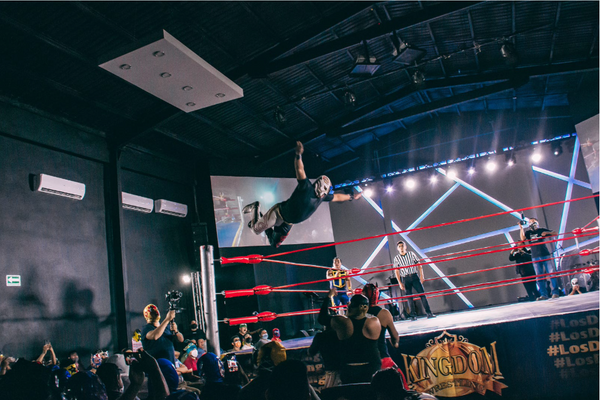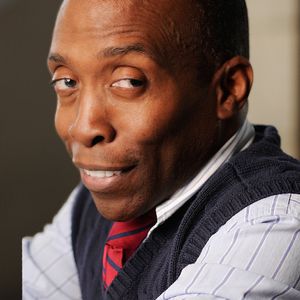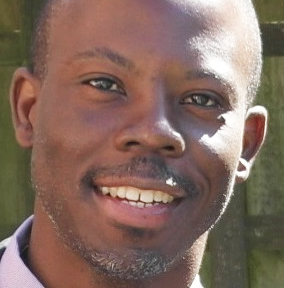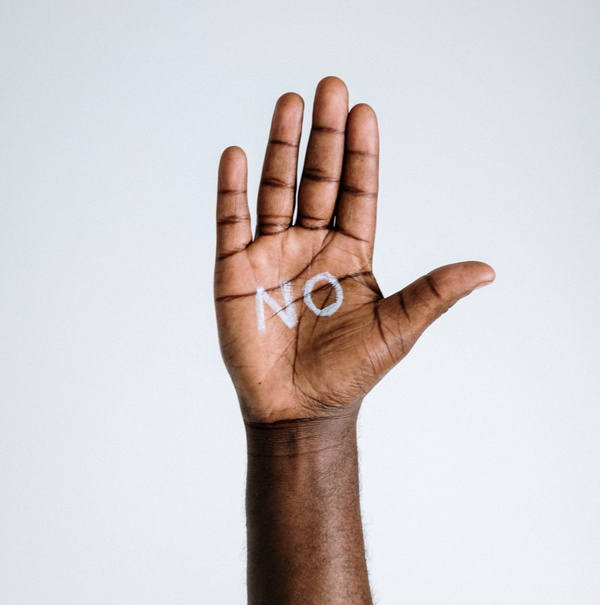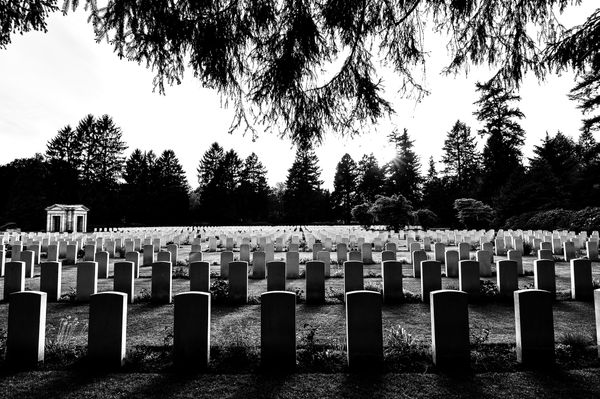In his Netflix special Michael Che Matters, the comedian talks about the gentrification of his neighborhood. “White women take whatever they want,” he jokes. “They took Brooklyn—I didn’t see that coming. Do you know how dangerous Brooklyn used to be? All of a sudden a bunch of rich white women from Seattle said ‘Brooklyn’s mines now!’ and then they just owned it.”
“Do white women even realize how powerful you are? You can move into a neighborhood and it will increase in value, just because of your presence . . . . I’d love to be able to gentrify a white neighborhood. Just move in, and people starting building shit that I like. Start selling cigarettes one at a time. Put bulletproof glass in all the restaurants.”
Che’s picture of Brooklyn’s gentrification is about class and the invasion of whiteness. When white women walk down the street in today’s Brooklyn, they see themselves both literally and figuratively reflected in the shops’ windows, which display the things that white women like. And so more white women come.
This sounds like the impersonal way markets work. Change the demand; the market will respond. It’s not political. But the white women of today’s Brooklyn will not see what Michael Che remembers and is mourning. They won’t notice the loss of community gathering places. They won’t feel the absence of a certain kind of signage. They won’t miss the sound of voices that boom and fall in a cadence that is different from white voices. They won’t miss it because white people aren’t trained to ask what came before them.
To ask “what was here before whiteness” is to open the more dangerous question: what had to be eliminated, for this way of organizing reality to appear natural, non-political, as “just the way things are?”
Whiteness and Civilization
The term “whiteness,” now, tends to refer to one of two definitions. In the first definition, whiteness is the net effect of individual white people’s racist violence on people of color. In the second, it refers to the racial resentment of a group of white people, often assumed to be working class.
This definition of whiteness refers to a group politics—the belief that People of Color are using the history of slavery and racism in the past to argue for “special rights” in the present, such as affirmative action or economic reparations, that give them an unfair leg up in the job market that results in a loss of opportunity for white people.
There is another definition of whiteness, however. In this third understanding, whiteness is an ideology. An ideology is a particular way the dominant culture determines what counts as normal, acceptable, and valuable. These terms then guide the way the larger systems of the social order function: how power is created and distributed; who is invested with authority and who is seen as threatening; and who is granted access to resources and why.
Looking at whiteness as an ideology is useful because we can make sense of situations, such as the one Michael Che describes, that cannot be attributed to the intentional actions of any one person or group of people.
One of the reasons his joke is so funny is because it is both true and absurd. Brooklyn has become white. But there is no group of rich white women who decided, “Brooklyn’s mines!” There is no one to hold accountable for the whitening of Brooklyn, and that’s part of why Che is so pissed.
Conceptualizing whiteness as an ideology gives us a way to talk about violence that isn’t committed by an individual or a group. More importantly, by being able to identify the workings of whiteness—rather than the actions of any particular person—we can create new opportunities to make visible the violence of whiteness and to understand why many white people see it as impossible to change. One way to see how whiteness works is to study its history.
Contemporary whiteness is rooted in a time called the Enlightenment, and understanding the Enlightenment can help unlock the meaning of this ideology.
From the 17th through the 19th centuries, Europe proudly proclaimed it had reached the pinnacle of civilization. Europeans were refined, appreciating art and music; they produced philosophy and religious texts, demonstrating their intellectual superiority; they were advancing in financial and political power. But the most crucial aspect of their culture was their devotion to reason: to science and its method, which was the source of a knowledge like no other.
The scientific method was designed to erase the interests, emotions, and biases of the investigator, leaving behind pure truth. Scientific law demonstrated that reality was organized according to its principles, and these principles were timeless, operating in the same way in all places. This period in history is called the Enlightenment because scientific truth, like a giant beam of light, was illuminating the workings of nature.
Scientific reason, uneasily co-existing with Christianity, made European “civilization” superior to primitive “culture.” People in other nations viewed knowledge as rooted in a particular place. For example, some organized their rituals around the cycles of the seasons and kept their practices in tune with the body. Europe could bring “progress” to these nations. They did so with “civilizing missions”—the moral face of imperialism and resource extraction, as European countries colonized other parts of the world.
And though Europe hailed its responsibility to bring progress, its focus was not just on the future. Like a wished-for amnesia, sweeping away everything that had come before, Enlightenment thought represented itself as both past and future.
What scientific reason discovered was a truth that was timeless. There was no asking what came before whiteness. To do so would be to evoke a time before truth—a blank space, waiting to be filled. Truth was always present. Europe discovered this truth, and determined to share it.
Whiteness and the Terror of Embodiment
It doesn’t take much of a leap to see that lurking inside the argument for the primacy of European civilization is the pride in transcending the limitations of the body. To free European man from the truth of his physical mortality and his dependence on others for survival, European culture performed a sleight of hand: white people devoted themselves to intellectual transcendence and the pursuit of ideas. Primitive people were hopelessly tied to the needs of the body.
Within Europe, men were the head of the household. Their intellect and capacity to make decisions meant they were responsible for the protection of others, made visible in their capacity to vote. They worked in the public sphere, competing with others in the capitalist marketplace. Women were naturally suited to the home because they were more emotional, less capable of reasoned thought, and concerned with the care and raising of children. Women were thought to be natural Christians because they were more easily moved by the plight of others.
The biological difference between the sexes was thought to cause this natural difference in disposition and ability, resulting in the division of the social order into separate spheres. The argument about the biological difference between the sexes was replicated in the ways Europeans interpreted the cultures of other races. European men were rational and impartial, focused on progress and ideas; members of darker races, male or female, were emotional, fearful, conniving liars, unable to plan or master the body’s needs.
Primitive people clearly didn’t value thinking because they didn’t enact “thinking” in the way it was recognized by European culture. So the darker people were lower in caste and value because they couldn’t recognize that transcendence was more valuable than embodiment.
Those who were racialized by whiteness were also feminized because those qualities Europeans cited as evidence of women’s natural inferiority were the same qualities that were attributed to primitive cultures. That these differences were said to be biological was crucial because they established a hard boundary between white European masculinity and those who needed and required the benevolent rule of a superior race.
When the European colonists who settled on the east coast of North America began moving into the interior, they borrowed the same racial arguments that had justified European imperialism to argue for Manifest Destiny. They cast the enslaved as primitives, needing the protection of masters to survive.
And they saw American Indians as hopelessly incapable of economic progress, as they were unable to recognize that land was wealth that could be owned and sold as property, or that self-interest was natural, and superseded the needs of the community.
And so the twin logics of whiteness and patriarchy created a web in which the vast majority of humanity was ensnared and cordoned off from the white, male Enlightenment knower. These others had no value in and of themselves. Instead, they served as screens onto which the fears of embodiment, fragility, dependence, and emotion could be projected.
Though the Enlightenment project had whiteness at its center, it represented itself as universal—as applicable to all people, throughout time. The “truth” was global and transhistorical. It just so happened that white civilization had the luck, the resources, and the intellect to discover and recognize truth. But it was truth that was leading the way, not whiteness. If white people benefited, it was as carriers of wisdom, not as vectors of power.
Seeing Whiteness
Though people today do not speak in the same explicitly racialized terms as eighteenth- and nineteenth-century imperialists, residues of these arguments continue to organize white culture. That science is the most powerful source of knowledge is taken as a given. Knowledge rooted in feeling, experience, or cultural difference often has to fight for legitimacy.
Objectivity, rationality, and lack of emotion are still qualities that are associated with leadership and access to power. People of Color are praised for their capabilities as athletes, dancers, and musicians—skills associated with the body—and they make up a significant number of the workforce in industries devoted to care of the physical self. Positions of power in business, education, finance, medicine, law, and universities continue to be occupied, for the most part, by white people with financial and cultural resources.
White culture generally permeates the dominant culture in the United States. The mainstream media communicates to its readers, viewers, and listeners—who are presumed to be white people, despite broad evidence to the contrary—how this particular way of interpreting what is “reality” is unchanging and exceptional.
And so the self-perpetuating system grinds on, representing itself as timeless and self-evident when it is only timeless and self-evident to other white people, who benefit from a system that almost never names itself as white.
It is challenging, therefore, for white people to begin to speak of whiteness as a system that must be dismantled when for so many, it is something they cannot yet see. When white people are asked to speak about whiteness, they often reply by talking about individual acts of racism.
Collapsing whiteness and racism allows white people to avoid confronting their implication in the suffering of people of color. And this soothes white people because we can assume that racism is a hold-over from outdated belief systems the culture is inexorably overcoming.
The hope is that this millennial generation, which experienced a Black president, understands intersectionality. And this demographic, more progressive in social values such as sexual freedom, won’t be as susceptible to arguments about inherent racial inferiority.
If they don’t act in explicitly racist ways; if they hold to the idea that all people deserve equality; if they are willing to vote for People of Color—then racism will be expunged from the social order, without too much collective effort.
White people’s belief that racism will just die out leads to their lack of urgency to challenge racism, even at the level of their individual and intimate lives. And it contributes to their blindness to the systemic nature of whiteness, and the need to understand how it works, in order to dismantle it.
Drinking the Kool-Aid
For much of my life, I unquestioningly followed the rules of whiteness. I got good at organizing my schedule; I read books about productivity and efficiency; I set lots of goals. In my family, we had an end-of-day ritual in which we told each other what we had accomplished. We didn’t speak about how we felt, or what we noticed was beautiful or sad. There was a lot of trauma in my family, and I think the ability to anticipate and order a day gave us a false belief we were in control.
As I grew up, my ability to subordinate my feelings in order to think and produce, no matter what was happening in my personal life, earned me praise. Eventually, I decided to go to graduate school. There, I prided myself on my interest in ideas. Feelings, I thought, just weren’t that important or useful. I didn’t realize that reading and writing were activities that kept pain out of my awareness. I didn’t think it was odd to ignore my hunger if I was trying to get through a chapter of a book. I had contempt for people who called in sick because they were too upset to work.
It took a long time before all this caught up with me. I had unwittingly made a bargain with myself—if I had the right letters after my name, I would be taken seriously. But there was a catch: I was stuck in a female body. I existed in patriarchy, and my worth, at least in part, would be linked to how I offset my thinking with my femininity. I had identified with thinking to forget my body. I wanted to be valued for myself, rather than what I might represent.
By the time I recognized I was emulating the white male Enlightenment knower — the exact form of thinking I had devoted myself to overturning — the only emotion I could feel was rage: sometimes blank and frozen, sometimes hot and fierce.
Writing about it now, this psychotic form of existence appears hard to believe. How could someone at once be motivated to challenge and undermine racism, sexism, and injustice and yet not be in touch with its emotional effects?
But from the space of my present self, I can see in my focus on disrupting systemic violence, an equivalent effort to protect myself from the terror that if I actually felt its emotional impact, I wouldn’t be able to cope.
It was learning how to feel, and how to attune to my body, that showed me how narrow my existence truly was. When the grief that lurked under my anger overcame me, I felt broken, fragile, and humiliated. It took several years before I could perceive anything other than loss; it took even more to feel joy. Paradoxically, it was only when I started feeling that I could fully appreciate why the Enlightenment dream of transcendence has so much power.
Over time, I realized that whiteness is in some ways impervious to political activism that focuses only on contesting racism and microaggressions. It depends on its invisibility and inevitability; it positions itself as above the fray.
To focus my attention on this form of whiteness, I’ve had to look at how I structure my time; what I assume is valuable; how the organizations in which I move replicate whiteness, and how I participate in furthering its project. I’ve had to look at my wish that I could figure it out, lead others to dismantle whiteness, and notice how that wish is an aspect of Enlightenment thinking itself.
I often wonder if the systematic training of white people to value thinking more than feeling contributes to the larger social numbing that is so often the response to the daily, relentless, brutal evidence of structural and racist violence. Recently, the Surgeon General of the United States told Black and Brown people to stop using alcohol and drugs, as an explanation for why they are dying in such large numbers from COVID-19.
Blaming a community for its own suffering, when it is clear that the susceptibility to infection is a result of resource scarcity, housing demographics, employment, and the health impacts of multigenerational trauma and oppression, is not only cruel but astoundingly, volitionally ignorant. It would be literally fantastic to say such a thing out loud, if not for this network of thinking and power that is making us so sick.
There are so many entrance points to undermining whiteness. We can begin at work when we notice that productivity and tight scheduling are squeezing out opportunities to allow uncertainty or fear to inform our decisions.
As we go through the day, we can imagine how a policy, a magazine article, or a legal decision might impact someone different from ourselves. We can look for, and counter, the ways our safety depends on others’ suffering. More importantly, we can refuse to behave in ways that reinforce a singular worldview, or accept arguments that domination, exploitation, and violence are inevitable aspects of our culture.
In its dream of overcoming death, whiteness has created a culture that is deadly. It harms not only People of Color and the earth but all of humanity. Every day, there are opportunities to change. Every day, we can create something new.



